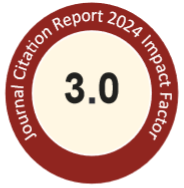Abstract
Twenty-nine commercial essential oil (EO) products that were purchased from the Taiwan market, including three different company-made Melissa officinalis essential oils, were assayed on their glucose consumption activity and lipid accumulation activity on 3T3-L1 adipocytes. The EOs of M. officinalis were significantly active in both model assays. By contrast, EOs of peppermint, lavender, bergamot, cypress, niaouli nerolidol, geranium-rose, and revensara did not increase glucose consumption activity from media, but displayed inhibited lipid accumulation activity (65-90% of lipid accumulation vs. the control 100%). Because of the promising activity of M. officinalis EOs, three different products were collected and compared for their gas chromatography chemical profiles and bioactivity. The Western blot data suggest that the key factors of the adenosine monophosphate-activated protein kinase/acetyl-CoA carboxylase pathway can be mediated by M. officinalis EOs. Together with biodata, gas chromatography-mass spectrometry profiles suggested mixtures of citrals and minor compounds of M. officinalis EOs may play an important role on effect of antidiabetes. © 2014, Food and Drug Administration, Taiwan. Published by Elsevier Taiwan LLC. All rights reserved.
ScienceDirect Link
Recommended Citation
Yen, H.-F.; Hsieh, C.-T.; Hsieh, T.-J.; Chang, F.-R.; and Wang, C.-K.
(2015)
"In vitro anti-diabetic effect and chemical component analysis of 29 essential oils products,"
Journal of Food and Drug Analysis: Vol. 23
:
Iss.
1
, Article 3.
Available at: https://doi.org/10.1016/j.jfda.2014.02.004
Creative Commons License

This work is licensed under a Creative Commons Attribution-Noncommercial-No Derivative Works 4.0 License.
Fulltext URL
https://www.sciencedirect.com/science/article/pii/S1021949814000593/pdfft?md5=ebfca4d14b6402cac83544ee10333b62&pid=1-s2.0-S1021949814000593-main.pdf
Included in
Food Science Commons, Medicinal Chemistry and Pharmaceutics Commons, Pharmacology Commons, Toxicology Commons

